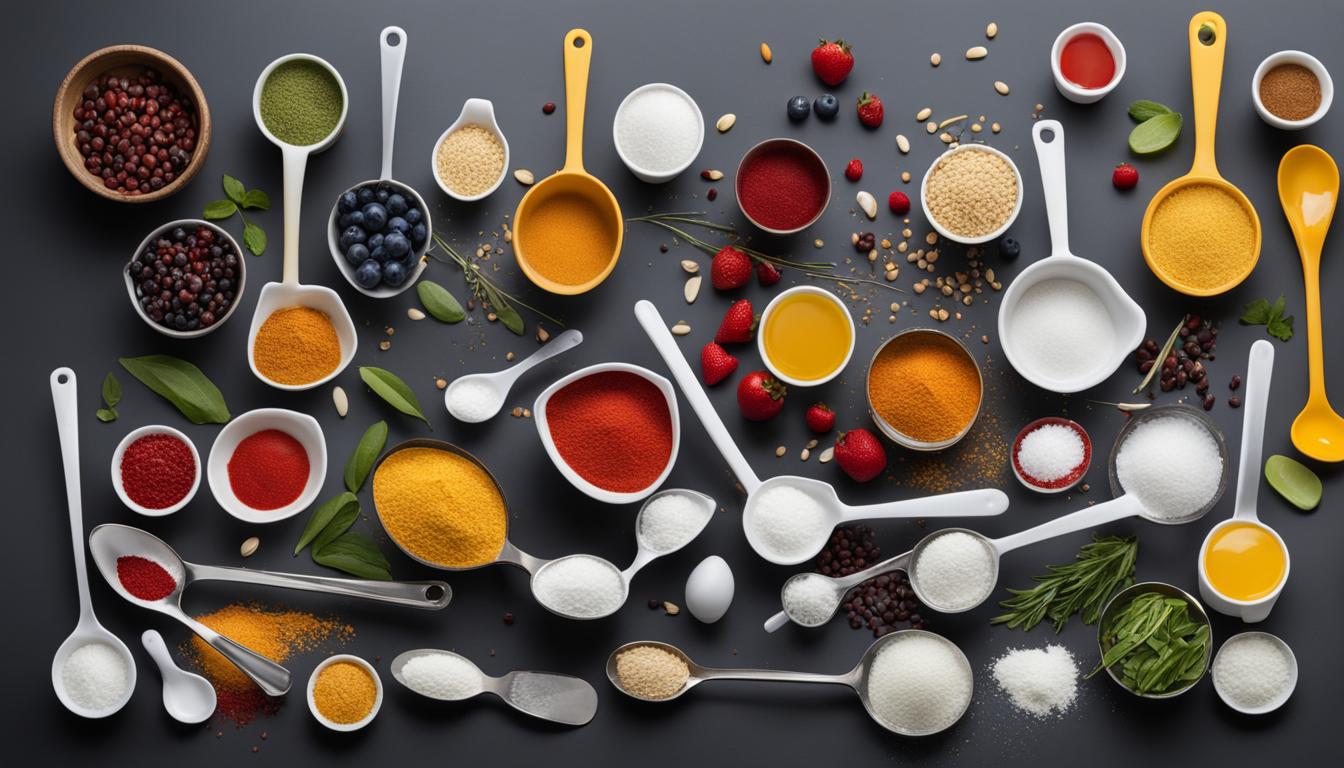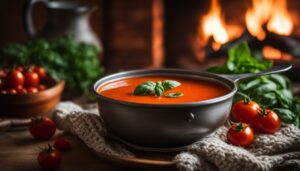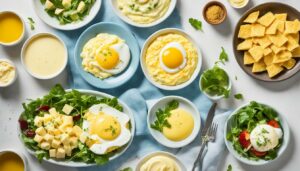Originally posted on December 13, 2023 @ 9:14 pm
When it comes to cooking and meal planning, understanding recipe yield is essential. But what exactly is recipe yield? Recipe yield refers to how much of a finished or processed product a recipe will produce. It can be stated in terms of quantity, such as 15 liters of tomato soup or 24 muffins. It can also refer to the amount of usable product after it has been processed, like peeled and cooked carrots.
Why is recipe yield important? Well, knowing the recipe yield allows for accurate portion control, ingredient management, and costing of menu items. It helps determine how much raw product to order, reduces waste, and ensures efficient inventory management. By considering losses and waste in preparation and cooking, recipe yield testing provides the true cost per dollar spent on ingredients.
Contents
- 1 What is Recipe Yield?
- 2 Importance of Recipe Yield
- 3 Calculating Recipe Yield
- 4 Understanding Yield Testing
- 5 Factors Affecting Recipe Yield
- 6 Recipe Yield in Meat and Seafood
- 7 Converting Recipes for Different Yields
- 8 Converting U.S. Measuring System Recipes
- 9 Converting Imperial Measuring System Recipes
- 10 Converting Metric Recipes
- 11 Conclusion
- 12 FAQ
- 12.1 What is recipe yield?
- 12.2 Why is recipe yield important?
- 12.3 How do you calculate recipe yield?
- 12.4 What is yield testing?
- 12.5 What factors can affect recipe yield?
- 12.6 How does recipe yield apply to meat and seafood?
- 12.7 How do you convert recipes for different yields?
- 12.8 How do you convert U.S. measuring system recipes?
- 12.9 How do you convert imperial measuring system recipes?
- 12.10 How do you convert metric recipes?
- 13 Source Links
Key Takeaways:
- Recipe yield refers to the amount of finished or processed product a recipe will produce.
- Understanding recipe yield is important for portion control, ingredient management, and accurate costing.
- Yield testing involves considering losses and waste during preparation and cooking.
- By calculating recipe yield, you can determine the true cost of ingredients and set appropriate menu prices.
- Recipe yield is crucial for optimizing operations and ensuring consistent, cost-effective production.
What is Recipe Yield?
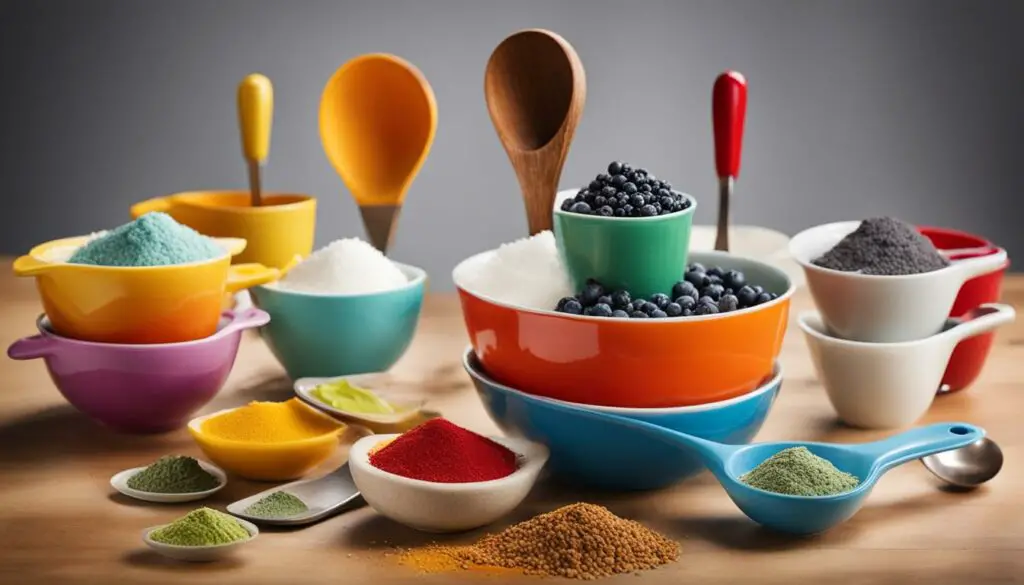
Recipe yield refers to the amount of the finished or processed product that a recipe will produce. It can be expressed in terms of both quantity and usability. For example, if a recipe requires 1 kg of carrots to make carrot soup, after peeling and trimming, you might end up with only 800 grams of usable carrots.
Understanding recipe yield is crucial for several reasons. Firstly, it helps with portion control, ensuring that you can accurately determine the number of servings a recipe will yield. This is especially important in a foodservice setting where portion sizes need to be consistent.
Recipe yield is also essential for ingredient management. By knowing exactly how much of an ingredient a recipe will produce, you can plan your inventory and ensure that you have enough ingredients on hand. This helps prevent waste and ensures that you can meet the demand for your menu items.
Additionally, recipe yield is necessary for accurate costing of menu items. By understanding how much of a particular ingredient is needed for a recipe and how much usable product it will yield, you can calculate the cost per portion and determine the profitability of your menu items.
Overall, recipe yield plays a vital role in the success of any culinary operation. It allows for efficient ingredient management, accurate portion control, and informed menu pricing. By considering recipe yield, chefs and foodservice operators can optimize their operations and deliver high-quality dishes to their customers.
Importance of Recipe Yield
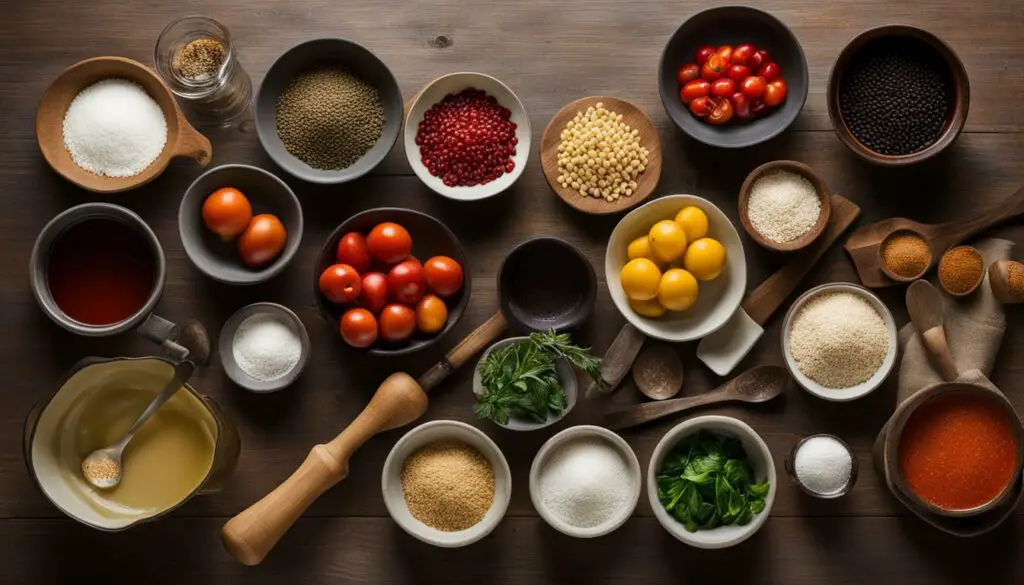
Understanding recipe yield is essential for chefs and foodservice operators. It not only determines the quantity of finished product a recipe will produce but also plays a crucial role in various aspects of culinary operations.
1. Planning Portion Sizes and Quantities: Recipe yield tells you how much usable product you will have after processing. This information allows you to accurately plan portion sizes and quantities for your menu items. By knowing the yield, you can ensure consistent portioning and avoid unnecessary waste.
2. Efficient Inventory Management: Recipe yield helps in determining how much raw product to order. By knowing the expected yield, you can calculate the right amount of ingredients required for a specific production cycle. This reduces waste and optimizes inventory management, resulting in cost savings.
3. Accurate Costing: Calculating the actual cost per dollar spent on ingredients is crucial for cost control and profitability. Recipe yield takes into account losses and waste during preparation and cooking, providing a more accurate representation of the actual cost. This helps in setting appropriate menu prices and ensuring that your dishes are priced competitively.
To illustrate, let’s consider the following example:
| Recipe | Yield | Raw Ingredients | Actual Cost |
|---|---|---|---|
| Tomato Soup | 15 liters | 20 kg tomatoes | $40 |
| Muffins | 24 pieces | 2 kg flour, 1 kg sugar, 500g butter | $25 |
In the table above, understanding the recipe yield allows you to calculate the actual cost per liter of tomato soup and per muffin. This knowledge is invaluable when it comes to pricing your menu items accurately and profitably.
By appreciating the importance of recipe yield, chefs and foodservice operators can optimize their operations, minimize waste, and ensure consistent quality in their culinary creations.
Calculating Recipe Yield

When it comes to recipe yield, calculating the percentage of usable product is key. By measuring and recording the weights or volumes of raw ingredients and accounting for any waste or trim weight, you can determine the processed or edible product weight. To calculate the yield percentage, simply divide the processed weight by the raw weight, then multiply by 100. This yield percentage is a valuable tool for determining the processed cost or edible product cost.
“Understanding the yield percentage is crucial for accurate costing and effective ingredient management. It allows chefs and foodservice operators to optimize their operations and ensure consistent, cost-effective production.”
To calculate the recipe yield, follow these steps:
- Weigh or measure the raw ingredients accurately.
- Process the ingredients according to the recipe.
- Record any waste or trim weight.
- Calculate the processed or edible product weight.
- Divide the processed weight by the raw weight.
- Multiply the result by 100 to get the yield percentage.
By understanding and calculating recipe yield, chefs and cooks can make informed decisions about ingredient quantities, portion sizes, and menu pricing. It enables effective cost management, reduces waste, and ensures consistent quality in culinary operations.
| Raw Ingredients | Weight/Volume |
|---|---|
| Carrots | 1 kg |
| Processed Carrots (edible product) | 800 grams |
In the example above, where the original raw weight of carrots is 1 kg and the processed weight (edible product) is 800 grams, the yield percentage can be calculated as:
Yield Percentage = (Processed Weight / Raw Weight) * 100
Yield Percentage = (800 g / 1 kg) * 100 = 80%
This yield percentage can then be used to determine the actual cost per dollar spent on ingredients, taking into account losses and waste incurred during preparation and cooking.
Understanding Yield Testing

Yield testing is a crucial step in the recipe development and costing process. By measuring and testing the yield of all ingredients and recipes, chefs and foodservice operators can accurately determine the true cost of processed ingredients, account for waste, and set appropriate menu prices.
During yield testing, factors such as losses and waste incurred during preparation and cooking are carefully considered. This includes elements like vegetable peel, meat and fish trim, and packaging. By understanding and accurately determining yield percentages, chefs can optimize their operations and ensure consistent, cost-effective production.
Through yield testing, chefs gain valuable insights into the amount of usable product they can expect from their recipes. This information is essential for ingredient management, portion control, and accurate costing. It allows chefs to plan portion sizes and quantities effectively, reducing waste and ensuring efficient inventory management.
Here is an example of a yield testing table for a recipe:
| Ingredient | Quantity (Raw) | Quantity (Processed) | Yield Percentage |
|---|---|---|---|
| Carrots | 1 kg | 800 g | 80% |
| Onions | 500 g | 450 g | 90% |
| Tomatoes | 1 kg | 900 g | 90% |
By conducting yield tests and understanding recipe yield, chefs can optimize their menu planning, reduce waste, and accurately calculate the cost per dollar spent on ingredients. Yield testing is an essential practice for ensuring the profitability and success of any foodservice operation.
Factors Affecting Recipe Yield
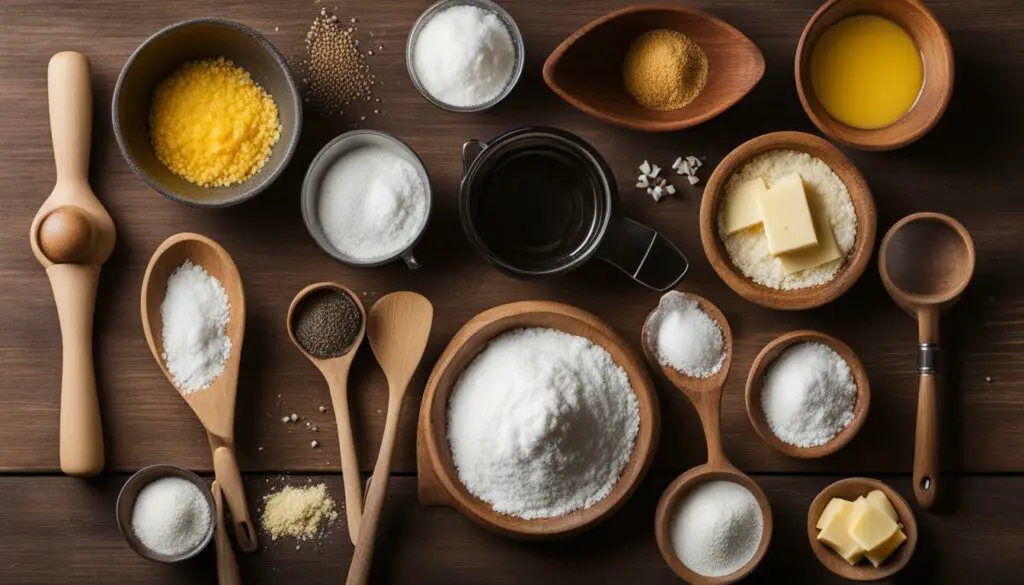
When it comes to recipe yield, several factors can significantly impact the final outcome. Understanding these factors is crucial for accurate recipe planning and cost management. The following are some key factors that can affect recipe yield:
- Quality and Freshness of Ingredients: The quality and freshness of ingredients play a vital role in determining the yield of a recipe. Using fresh and high-quality ingredients can result in a higher yield, while poor quality or expired ingredients may lead to lower yield.
- Preparation Method: The way ingredients are prepared can have a significant impact on recipe yield. Factors such as cutting styles, cooking techniques, and processing methods can affect the final yield. For example, different cutting styles can result in variations in ingredient sizes, which in turn may affect yield.
- Skill of the Cook: The skill and expertise of the cook or chef can also influence recipe yield. A knowledgeable and experienced cook will be able to measure ingredients accurately, follow proper techniques, and minimize waste, resulting in a higher yield.
By considering these factors and making necessary adjustments, you can optimize recipe yield and ensure consistent results. Careful measurement, proper ingredient handling, and using high-quality ingredients can help maximize the yield of your recipes.
| Factors Affecting Recipe Yield | Impact |
|---|---|
| Quality and Freshness of Ingredients | Higher quality and freshness can result in a higher yield. |
| Preparation Method | Different techniques can affect ingredient sizes and yield. |
| Skill of the Cook | An experienced cook can minimize waste and maximize yield. |
Recipe Yield in Meat and Seafood
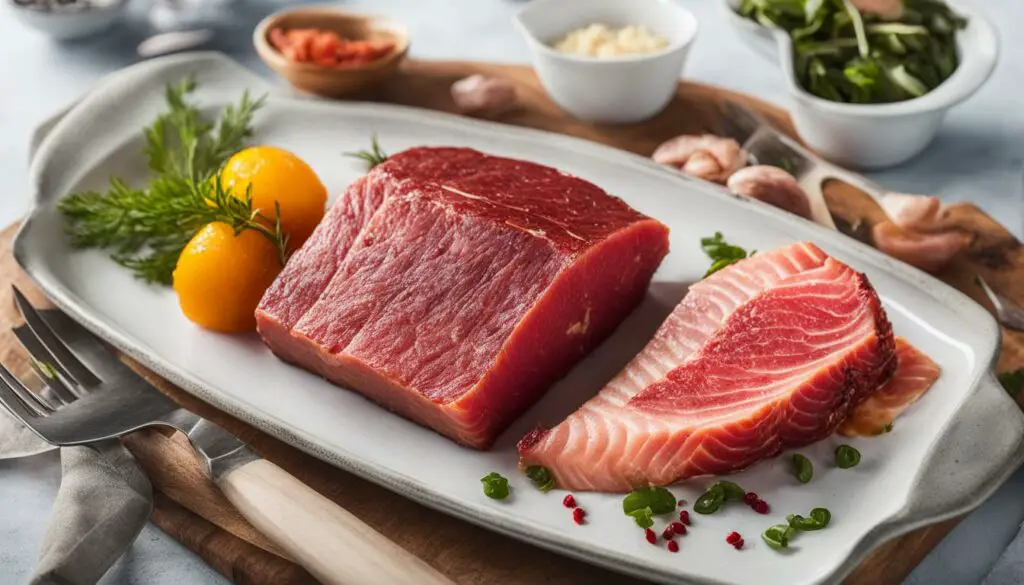
When it comes to meat and seafood products, there is often a significant amount of waste due to trimming and cutting. To accurately determine the cost and portion size of these ingredients, a meat cutting yield test or seafood cutting yield test is conducted. This test involves breaking down or trimming the wholesale cut, recording the weights of the different parts, and calculating the yield percentage and cost factors.
By conducting these tests, chefs and foodservice operators can determine the usable meat or seafood cost and adjust menu prices accordingly. This ensures that they are maximizing the value of their ingredients and reducing waste.
For example, let’s consider a pork loin that weighs 5 kilograms. After trimming and removing excess fat, bones, and other inedible parts, the usable meat may only yield around 3.5 kilograms. By calculating the yield percentage, chefs can accurately determine how much usable meat they have obtained and adjust the cost and portion size accordingly.
Cutting yield tests are particularly important for meat and seafood recipes, as they help chefs and foodservice operators plan their menu items more effectively and ensure that they are using the appropriate quantities of ingredients.
| Ingredient | Raw Weight | Usable Weight | Yield Percentage |
|---|---|---|---|
| Beef Tenderloin | 3.5 kilograms | 2.8 kilograms | 80% |
| Salmon Fillet | 2 kilograms | 1.6 kilograms | 80% |
| Chicken Breast | 2.2 kilograms | 1.6 kilograms | 73% |
Table: Example of Meat and Seafood Cutting Yield Test Results
By understanding the recipe yield in meat and seafood, chefs and foodservice operators can make informed decisions about pricing, portioning, and ingredient management. This not only helps in controlling costs but also improves the overall efficiency and profitability of their operations.
Converting Recipes for Different Yields
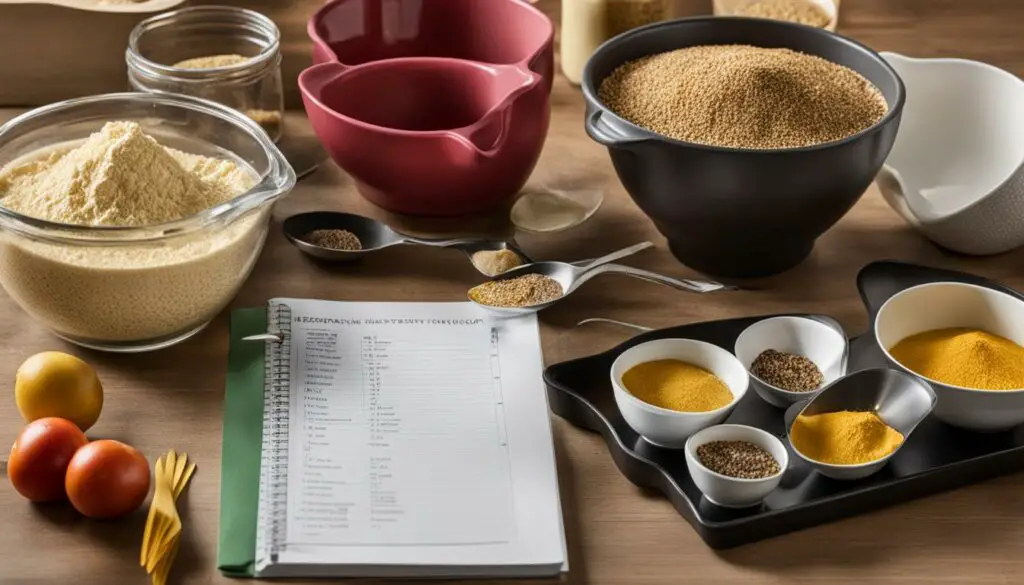
Recipes often need to be adjusted to meet different yield requirements, whether it’s changing the number of portions or portion sizes. When it comes to converting recipes, the most common method is to use a conversion factor.
The conversion factor is calculated by dividing the required yield by the original yield. This factor is then used to adjust the quantities of ingredients in the recipe. However, it’s important to exercise caution when adjusting spices, seasonings, and cooking or mixing times during the conversion process to maintain the desired flavor and texture.
Here’s a simple example to illustrate how recipe conversion works:
| Original Recipe | Conversion Factor | Adjusted Recipe |
|---|---|---|
| Yield: 4 servings | Required yield: 8 servings | Yield: 8 servings |
| 1 cup flour | (8 servings ÷ 4 servings) = 2 | 2 cups flour |
| 1 teaspoon salt | (8 servings ÷ 4 servings) = 2 | 2 teaspoons salt |
| 1/2 cup sugar | (8 servings ÷ 4 servings) = 2 | 1 cup sugar |
By using the conversion factor of 2, the quantities of each ingredient are doubled to adjust the recipe from 4 servings to 8 servings.
Keep in mind that adjusting recipes for different yields may require some additional experimentation and fine-tuning to achieve the desired results. Don’t hesitate to taste and adjust the seasoning as needed to ensure the flavors are balanced.
Converting U.S. Measuring System Recipes
When it comes to converting recipes that use the U.S. measuring system, you may need to express quantities in different units, such as ounces or fluid ounces. This conversion process is essential to ensure accurate measurements and maintain the integrity of the recipe.
To convert a U.S. recipe, follow these steps:
- Find the conversion factor: The conversion factor is a multiplier that will help you adjust the quantities of ingredients. For example, if you are converting a recipe from cups to ounces, the conversion factor would be the number of ounces in one cup.
- Multiply each ingredient: Take each ingredient listed in the recipe and multiply it by the conversion factor. This will give you the adjusted quantity for that ingredient.
- Convert volume measures to weight: Whenever possible, convert volume measures to weight. This is especially important for dry ingredients, as measuring by weight provides a more accurate measurement. Keep in mind that liquids with high sugar content should be measured by weight, rather than volume.
By following these steps, you can ensure that your converted U.S. recipes turn out just as delicious as the original.
Converting Imperial Measuring System Recipes
Converting recipes using the imperial measuring system is a similar process to converting U.S. recipes. However, there are specific considerations when it comes to the conversion of liquids. In the imperial system, the number of ounces in a pint, quart, and gallon differs from the measurements used in the U.S. system. To ensure accurate adjustments for the desired yield, it is crucial to use the correct conversion rates.
| Imperial System Conversion Rates | U.S. System Conversion Rates |
|---|---|
| 1 imperial pint = 20 fluid ounces | 1 U.S. pint = 16 fluid ounces |
| 1 imperial quart = 40 fluid ounces | 1 U.S. quart = 32 fluid ounces |
| 1 imperial gallon = 160 fluid ounces | 1 U.S. gallon = 128 fluid ounces |
By using the correct conversion rates, you can accurately adjust recipes that use the imperial measuring system to achieve the desired yield. Whether it’s converting a family recipe or adapting a classic dish for a larger crowd, understanding the conversions specific to the imperial system ensures consistent and successful results.
Converting Metric Recipes
Converting metric recipes is a straightforward process, similar to converting recipes using the U.S. and imperial systems. The advantage of the metric system lies in its clear relationship between grams and kilograms. To convert a metric recipe to a different yield, you need to find the conversion factor and multiply each ingredient accordingly. The ease of adjusting metric recipes makes it the preferred system for precise recipe conversions.
When converting a metric recipe, start by determining the desired yield and the original yield. Divide the desired yield by the original yield to find the conversion factor. Then, multiply each ingredient in the recipe by the conversion factor to adjust the quantities accurately. Pay attention to both weight and volume measurements, ensuring consistency throughout the conversion process.
Conclusion
Understanding recipe yield is essential for chefs and foodservice operators to effectively plan their menus and manage their ingredients. Recipe yield provides valuable information about the quantity of finished products a recipe will produce and the amount of usable product after processing. By accurately calculating recipe yield, chefs can control portion sizes, minimize waste, and ensure accurate costing of menu items.
In addition to portion control and ingredient management, recipe yield plays a crucial role in efficient inventory management. By knowing how much raw product to order and understanding the losses and waste incurred during preparation and cooking, chefs can reduce waste and optimize their inventory levels.
Conducting yield tests and converting recipes for different yields are practical strategies for optimizing production and maintaining cost-effectiveness. Yield tests help chefs determine the true cost of processed ingredients, allowing them to set appropriate menu prices. Converting recipes for different yields ensures that chefs can adapt their recipes to varying portion sizes, making menu planning more flexible and accommodating to customer demands.
By recognizing the importance of recipe yield and implementing effective strategies to calculate and adjust it, chefs and foodservice operators can streamline their operations, improve profitability, and deliver consistent and high-quality meals to their customers.
FAQ
What is recipe yield?
Recipe yield refers to how much of a finished or processed product a recipe will produce.
Why is recipe yield important?
Understanding recipe yield is important for portion control, ingredient management, and accurate costing of menu items.
How do you calculate recipe yield?
To calculate recipe yield, you need to determine the percentage of usable product you will have after processing.
What is yield testing?
Yield testing is the process of measuring and testing the yield of all ingredients and recipes before costing a menu.
What factors can affect recipe yield?
Several factors can affect recipe yield, including the quality and freshness of ingredients, the preparation method, and the skill of the cook.
How does recipe yield apply to meat and seafood?
Meat and seafood products tend to have significant amounts of waste due to trimming. Yield tests help in determining the usable meat or seafood cost and adjusting menu prices accordingly.
How do you convert recipes for different yields?
Recipes can be adjusted by using a conversion factor, which is calculated by dividing the required yield by the original yield.
How do you convert U.S. measuring system recipes?
Quantities may need to be expressed in different units, such as ounces or fluid ounces. Conversion involves finding the conversion factor and multiplying each ingredient by the factor.
How do you convert imperial measuring system recipes?
The same process as converting U.S. recipes is followed, with special attention to the conversions of liquids using the correct conversion rates.
How do you convert metric recipes?
To convert a metric recipe, find the conversion factor and multiply each ingredient by the factor.

